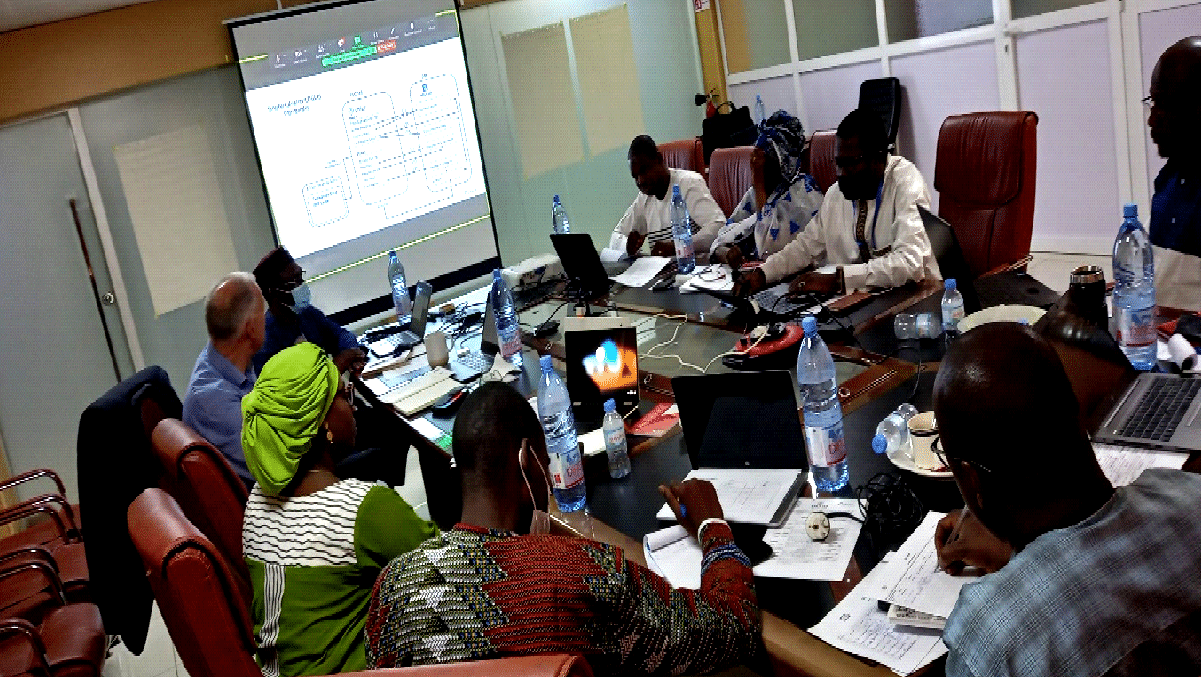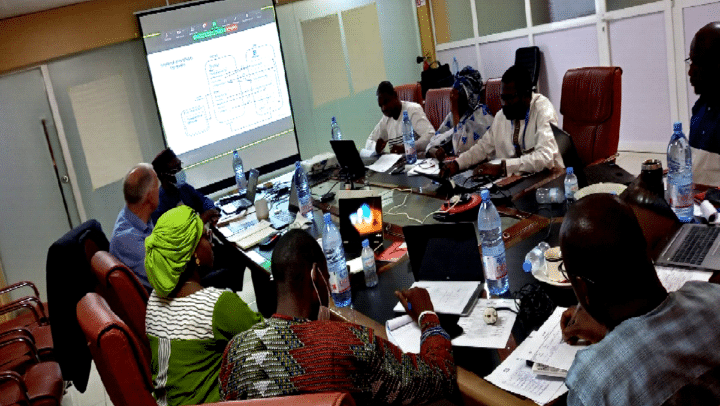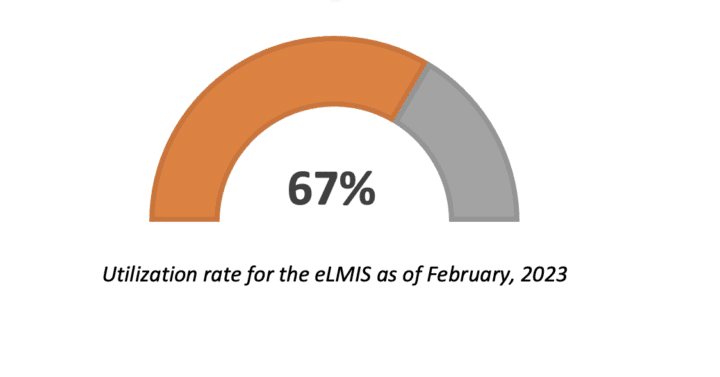
Mali implements an integrated eLMIS leveraging DHIS2 and MEDEXIS for real-time logistics management
Integrating digital logistics management software with the existing national DHIS2 system allows Mali to achieve end-to-end electronic health supply chain management for data-backed timely stock replenishment, thereby reducing stock-outs in health facilities
Mali is a large West African country with a population of 22 million. The country has 11 health regions made up of 75 districts and 3,234 public and private health facilities. Mali’s health system has three main objectives: (i) Improve the health status of the populations so that they participate more actively in the socio-economic development of the country; (ii) Extend health coverage while making services accessible to the population; and (iii) Make the health system viable and efficient. Achieving these goals requires a well-functioning national health system that provides health services to populations across the country, which in turn is dependent on an effective logistics system for providing health facilities with sufficient medical supplies.
Mali has used DHIS2 as a national Health Management Information System (HMIS) since 2016. Using DHIS2, data on both health services and supply are collected at the facility level. Beginning in 2022, with funding from USAID and technical assistance from the HISP Centre at the University of Oslo (UiO), HISP West and Central Africa (WCA) and I+Solutions, the Ministry of Health implemented an electronic Logistics Management Information System (eLMIS) which integrates DHIS2 with MEDEXIS, an LMIS software. This integrated system has automated critical aspects of health logistics and inventory in Mali, including generation of purchase orders, delivery slips and product receipt sheets, which has reduced the workload for staff. It has also made logistics management more efficient: Before the integrated eLMIS, input orders from health facilities were not generally based on actual consumption data, which caused shortages or overstocks of essential commodities and drugs. By using automatic calculations based on monthly consumption patterns and the maximum stock level for each health facility, the MEDEXIS-DHIS2 solution facilitates accurate and timely stock replenishment. Furthermore, program managers have noted significant improvement in data quality, especially in data relating to product quantities received by health facilities. This is because product use records at the facility levels are updated in DHIS2 and automatically synchronized with data in the MEDEXIS eLMIS for effective inventory management and logistics planning.
Improving data quality and management effectiveness by digitizing inventory systems
The health product supply chain is an important component of any health system. In Mali, the health system faced difficulties regarding access and availability of health products, as well as timely access to data from the information system for logistics management. In September 2014, in order to improve data management for essential drugs, the Ministry of Health, through the Directorate of Pharmacy and Medicine (DPM) implemented the health product monitoring tool called OSPSANTE. This initiative was facilitated by technical and financial support from USAID. OSPSANTE is presented in the form of a web-based dashboard used for aggregation and analysis of commodity data for health programs including malaria, HIV, family planning, maternal and child health, and nutrition.
In 2016, Mali adopted DHIS2 as a national platform for managing health data, including health commodities. In order to lighten the workload for field staff and avoid double data entry, interoperability was established between DHIS2 and OSPSANTE. Logistics data for health products is entered at the level of all health facilities in DHIS2 then transferred to OSPSANTE to facilitate the production of reports and data analysis. This reduced the time and cost of transmitting hard copies of logistics reports. However, this system had limitations: while OSPSANTE functions as a logistics data monitoring and reporting tool, it does not provide digital management of inventories and movement of product stocks between supply depots and health facilities. A full-featured eLMIS solution was therefore deemed necessary to strengthen the supply chain of health products in Mali.
In August 2020, Palladium, in partnership with FHI360, Groupe Pivot Santé Population and I+Solutions, launched a health system strengthening project in Mali termed Sinsi Walé’s smile, funded by USAID. In preparation for the project, I+Solutions adopted measures to improve local inventory management through routine technical meetings and exchanges with the DPM technical team. A number of proposals were discussed with emphasis on improving the existing system and integrating it into the DHIS2-OSPSANTE environment. Ultimately, the MEDEXIS eLMIS software was selected to complement the existing integrated system, providing the missing link in the digital management of inventories and product stocks. As with OSPSANTE, the logistics data entered in DHIS2 is sent to MEDEXIS via a direct integration to facilitate digital inventory and logistics management.
Achieving end-to-end transaction digitization through integration design
The MEDEXIS eLMIS is a software-as-a-service web application. It is an autonomous tool to ensure logistics management and end-to-end product monitoring, featuring integrated eLMIS reporting functions. In the context of Mali, the data entry and reporting features of MEDEXIS are not used, because last-mile data entry at the facilities is already done in DHIS2, while analysis and reporting are handled by the OSPSANTE platform. The primary focus of the integrated system is to digitize transactions, including orders, packing and shipments. To achieve this goal, I+Solutions solicited technical assistance from the HISP Centre at UiO and HISP WCA to support the development of an integrated DHIS2-MEDEXIS eLMIS. The team of DHIS2 and logistics management experts worked with MEDEXIS developers (XNR-SISBI and I+Solutions) to plan an implementation based on the Push Supply Model.
In this model, the data flow remains unchanged at the health facility level. The data entered in DHIS2 is synchronized with MEDEXIS, which then makes the replenishment calculations based on 3 months of average monthly consumption and the maximum stock level for a facility. The order suggestions are thus generated by MEDEXIS and the order forms sent to the facility via DHIS2 internal messaging in PDF format. These orders are validated by the facility in DHIS2 through an Order Confirmation Event Program. Once the orders have been validated, MEDEXIS automatically prepares the shipment and sends the delivery note to the facility via DHIS2 messaging. Once the supplies are delivered, the facility confirms receipt in DHIS2 through the Acknowledgement of Shipment Received Event program.

Collaborative planning, phased implementation and multi-level training to support successful deployment
As of early 2023, the DHIS2-MEDEXIS solution has been implemented in three regions in Mali: Sikasso, Ségou and Mopti, covering 26 health districts and 701 health facilities. The implementation was carried out in phases, beginning with programming and software configuration planning workshops; central server configuration and software interoperability setups; field testing; and finally, multi-level training.
In May 2022, I+Solutions and experts from the HISP Centre organized a planning workshop for the eLMIS project, which helped the team clarify the purpose and structural context for the eLMIS implementation based on the current and planned flow of LMIS data. The workshop was also an opportunity to assign roles to the different actors; demonstrate the functionality of interoperability between DHIS2 and MEDEXIS on a local server; and finalize programming and MEDEXIS configuration plans as part of the existing DHIS2/OSPSANTE system. Finally, the workshop helped the team determine and validate a workable timeline for the project’s implementation.
In June 2022, an orientation workshop was held in Bamako to build the capacity of central-level actors on the generic functionalities of MEDEXIS. This follow-up workshop facilitated by I+Solution’s MEDEXIS experts helped prepare key stakeholders at the central level to better manage the process of DHIS2-MEDEXIS integration and as well as train operational-level players on the developed eLMIS solution.
Following these workshops, the technical team configured the central server at the national level and set up interoperability functionality between DHIS2 and MEDEXIS. The team further developed a detailed guide to help DHIS2 administrators manage the configuration in both DHIS2 and MEDEXIS. This was followed by tests on computers and tablets to verify the suitability and stability of the system. Subsequently, in-depth field tests were conducted in real working conditions at the Selingue health district (Sikasso region) in August 2022. The field tests were conducted in line with the established User Acceptance Testing protocol, which facilitates independent confirmation of configuration compliance with Mali’s use case. During the field tests, synchronization errors were identified that prevented some features from running automatically. These errors were corrected, and additional improvements were made by the team.
After the successful configuration and testing of the integrated eLMIS platform, training of trainers at the national and regional levels was conducted in preparation for full-scale adoption of the system. These sessions targeted key stakeholders including DMP executives, regional pharmacists and regional Système d’Information Sanitaire (SIS) officers to facilitate local ownership of the training modules and to better equip them to train others at the operational level. This three-day session aimed to ground the participants in the eLMIS approach in Mali and train them on the generic functionalities of the MEDEXIS software, including user management, data synchronization, replenishment calculations and order and shipping management.

Subsequently, training sessions were held for health district teams, building the capacity of operational-level staff on the eLMIS platform. Participants included DRC managers, logistics assistants and SIS officers in the regions of Sikasso, Ségou and Mopti. The training focused on data synchronization between the LMIS and DHIS2, replenishment calculations and requisition/shipment tracking in MEDEXIS. Participants also learned how to validate orders and acknowledge delivery receipt in DHIS2. Additional training on order confirmations and receipt acknowledgments were conducted for CSComs staff between November 2022 and February 2023.
Monitoring interoperability dynamics between DHIS2 and MEDEXIS eLMIS
In December 2022, health districts began using the eLMIS solution to manage health commodity transactions. By the end of February 2023, the utilization rate of the eLMIS solution was 67%.

Mali is the first country to have implemented an integrated DHIS2-MEDEXIS solution. Monitoring the performance of this innovative solution is therefore essential for sustainability and knowledge sharing. A monitoring mechanism has been put in place to progressively improve the system’s functions and user experience. This mechanism consists of a user support model including a document describing the different levels of support as well as the roles of the different actors; an eLMIS discussion group with communication channels between the stakeholders involved in the Medexis project, and a monthly meeting to monitor eLMIS activities in Mali.
Though the eLMIS DHIS2-MEDEXIS solution does not yet cover all of the country’s 75 health districts, it has already begun to improve health logistics in Mali, paving the way for a nationwide digital end-to-end logistics management system.


